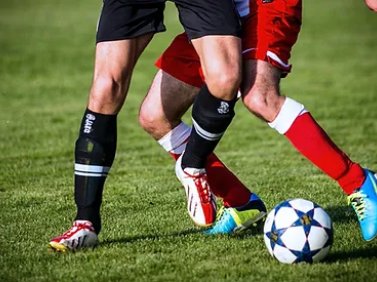Anterior Cruciate Ligament
Injury Guide

As an athlete, few injuries can be as devastating as an ACL (Anterior Cruciate Ligament) sprain or tear. The ACL plays a crucial role in stabilizing the knee joint, and its injury can lead to pain, instability, and significant limitations in athletic performance. However, with the right understanding, rehabilitation, and support, athletes can regain their strength, confidence, and return to the sports they love. This comprehensive guide aims to provide athletes with valuable information about ACL sprains and repairs, including symptoms, causes, and best rehabilitation strategies. If you’re seeking professional assistance, our experienced physical therapy clinic is dedicated to helping you on your road to recovery.
The ACL is one of the major ligaments in the knee joint, connecting the thighbone (femur) to the shinbone (tibia). It plays a crucial role in providing stability and preventing excessive movement of the knee. ACL injuries are commonly caused by sudden stops, changes in direction, or direct impact to the knee, which can result in sprains or complete tears.
Symptoms:
ACL injuries often present with immediate pain and swelling in the knee, a popping sound or sensation during the injury, difficulty bearing weight on the affected leg, instability, or a feeling of giving way in the knee. ACL injuries can also present with limited range of motion and difficulty straightening the leg.
Anatomy:
The Anterior Cruciate Ligament (ACL) is a vital structure within the knee joint, and understanding its anatomy can help athletes grasp the implications of ACL disorders.
The ACL is one of the primary ligaments connecting the thigh bone (femur) to the shin bone (tibia). It runs diagonally through the center of the knee, crossing with the Posterior Cruciate Ligament (PCL) to form an “X” shape. This positioning provides stability and prevents excessive forward movement of the tibia relative to the femur.
The ACL comprises dense, fibrous tissue and is responsible for restraining rotational forces applied to the knee. During activities such as cutting, pivoting, and jumping, the ACL plays a crucial role in maintaining the integrity of the knee joint.
When the ACL is sprained or torn, it can significantly impact an athlete’s performance and overall knee stability. The severity of the injury can range from a mild sprain to a complete tear, affecting the individual’s ability to engage in sports activities.
In ACL disorders, the ligament’s integrity is compromised, leading to increased knee joint laxity. This laxity manifests as knee instability, which can cause the knee to buckle or give way during movements. Athletes may experience difficulty maintaining balance and executing precise movements, impacting their performance and putting them at a higher risk of re-injury.
Causes:
ACL injuries can occur due to various factors. Non-contact injuries, such as abrupt changes in direction, landing awkwardly, or sudden stops, can place excessive stress on the ACL, leading to injury. Contact injuries, such as direct impact or collisions with another player, can also cause the ACL to tear.
Rehab Strategies:
Rehabilitation is a critical component of recovering from an ACL injury. A comprehensive rehabilitation program focuses on restoring knee function, improving strength and stability, and gradually returning to sports activities. At our physical therapy clinic, our expert team of professionals will guide you through each stage of your recovery.
Stage 1: Immediate Post-Injury Phase:
During this phase, the RICE method (Rest, Ice, Compression, and Elevation) is employed to reduce pain and swelling. Crutches or a brace may be used to minimize weight-bearing and protect the injured knee. Early range of motion exercises are initiated to prevent stiffness and maintain joint mobility.
Stage 2: Strengthening and Stability Phase:
This phase includes targeted exercises to strengthen the quadriceps, hamstrings, and calf muscles. Balance and proprioceptive training are incorporated to enhance joint stability. Low-impact cardiovascular exercises help maintain overall fitness levels.
Stage 3: Functional Training Phase:
In this phase, sport-specific exercises are introduced to replicate movements required in your chosen sport. Plyometric training is incorporated to improve power, agility, and coordination. Gradual reintroduction to sports-specific activities takes place under professional supervision.
Manual therapy techniques such as joint mobilizations and soft tissue techniques help improve flexibility and reduce scar tissue formation. Massage therapy can alleviate muscle tension and promote relaxation. Neuromuscular Electrical Stimulation (NMES) may be used to facilitate muscle activation and enhance strength during rehabilitation. Patient education and support are also vital for maintaining motivation and adherence.
Recovering from an ACL sprain or tear can be a challenging journey for athletes, but with the right knowledge, dedication, and support, you can regain your strength, stability, and confidence. Don’t let an ACL injury hold you back from pursuing your athletic goals – take the first step towards your recovery today.
Let’s
Work
Together
Ready to get started? Click here. General questions? Read our FAQ page. Have a specific question? Leave us a message!
